Planning a trip to Italy? Yay, I’m excited for you! To help you make the most of your Italian adventure, we’ve compiled some essential travel tips for Italy. From what to know about Italy before visiting to practical advice on navigating its vibrant cities, these tips for traveling Italy will ensure you’re well-prepared for an unforgettable experience.
[convertkit form=6770429]
Whether you’re following my 7 day Italy itinerary or DIYing it, it’s best to be as prepared as possible when traveling internationally. Tips for traveling in Italy can range from cultural etiquette to practical packing suggestions, and knowing these details can make your trip smoother and more enjoyable. Dive into these travel tips for Italy to uncover everything you need to know—from how to dress appropriately for church visits to how to handle those charming but sometimes tricky local customs.
Regardless of if you’re spending just 2 days in Rome, or spending 10 days exploring the art and culture in Florence, Italy is a country brimming with history, culture, and delicious food. As you get ready for your Italian escapade, it’s crucial to be aware of a few key things.
Disclosure: This post may contain affiliate links. If you make a purchase through these links, we may earn a commission at no extra cost to you.

Complete List of Travel Tips for Italy
1. Italy’s cities often have cobblestone streets, so pack sturdy, comfortable shoes for walking. No one will turn their nose up at you for leaving your heels behind. And if you are bringing heels, definitely bring blocky and sturdy ones because that cobblestone can be unforgiving.
2. Don’t go to Italy without a good cross body bag. It’s one of the most common tips for traveling in Italy for a good reason. This one is my favorite to travel with, but any you have will do. If you’d prefer not to wear something over your cute clothing or you’re like my husband and travel pretty lightly but are wary of pickpockets, a money belt can be another solid option, especially in Rome.
3. Pack as light as you can. You’ll likely be traveling between train stations or bus stations and you’ll be thankful if you don’t have a 50 lb checked bag. Plus wheels and cobblestone is not a great combination. Don’t forget to check out my full Italy packing list!
4. If you’re wondering what to know about Italy before visiting, this isn’t a shocking tip, but just a reminder that weather can vary greatly, especially in the shoulder seasons. Bring different layers that you can adjust based on temperature and activity.
5. Dress modestly for churches. When visiting churches, including St. Peter’s Basilica in Vatican City, ensure your shoulders and knees are covered. I love a Pashmina scarf for that occasion because it packs down nice and light but can be thrown over your shoulders or tied around your waist as a skirt.

6. You’ll need an adapter for electrical outlets: Italy uses Type C, F, and L plugs, so bring an appropriate adapter for your electronics. This one is my favorite.
7. Pack a reusable water bottle. Many Italian cities have public drinking fountains where you can refill your bottle. This water is totally safe to drink and there’s no reason to plan on buying bottled water.
8. Pack sunscreen. The sun can be really intense in Italy, especially in the summer, so protect yourself from sunburn or you’ll be annoyed at how much of a lobster you look like in pictures. This is my favorite travel size sunscreen because it works super well on my face but takes up very little room.
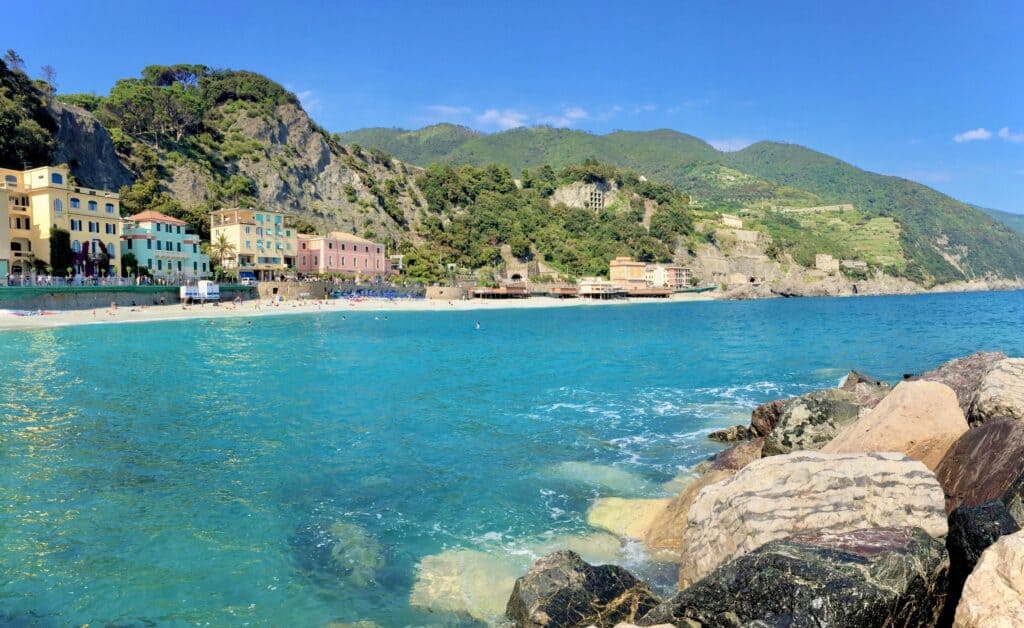
9. When navigating, download Google Maps for offline use if you don’t have international data. I’ve also loaded my route on Apple Maps while I’m on wifi and it will continue to navigate you even when you don’t have cell service. Getting back can be challenging, but free wifi is plentiful enough that I’ve been able to figure it out.
10. While it’s polite to be on time, Italians are generally more relaxed about punctuality compared to other cultures.
11. Pre-book attractions. Whether you’re visiting the Colosseum, Vatican Museum/Sistine Chapel, or the Uffizi Gallery, these attractions will fill up in space. Most tickets are released 30-60 days prior.
12. If you’re short on time, book a Skip the Line experience through Get Your Guide. I’d do that for the Colosseum, Sistine Chapel, and Uffizi Gallery. If you missed the 30-60 day out window, all hope is not lost, as these tours won’t typically sell out quite as far in advance since they have a set number of pre-bought tickets.
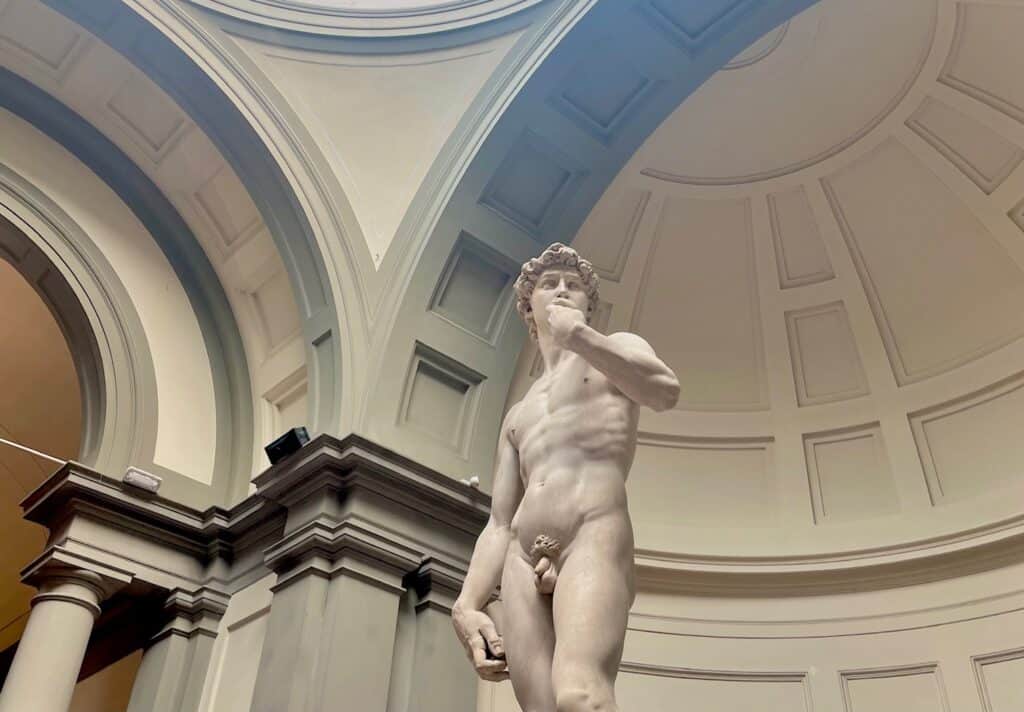
13. As I detail in my guide to the best month to visit Italy, if you’re visiting Italy in the winter, you may be able to get away with not booking as far in advance. Traveling in the winter can be a great way to save money and deal with fewer crowds at some of these famous attractions.
14. Don’t expect the server to rush your meal or try to clear your table. Italians enjoy leisurely dining and you should plan to embrace that when in Rome (literally). In my experience, flagging them down for the check can take 25 minutes, even if they’re not that busy.
15. Also, tipping is not customary among Italians, so you don’t need to do so either. Rounding up the bill is appreciated but not necessary. Seriously.
16. Have an Italian phrasebook. Though many Italians speak English, learning a few basic Italian phrases can be helpful and will be appreciated by the locals. If you’re cramped for time or just don’t want to commit to Duolingo, download my 1-page Italian phrasebook and screenshot it so it’s easy to reference when you’re traveling in Italy.
[convertkit form=6768522]
17. Italians love espresso and pastries for breakfast. And I’m all about following the local’s lead when traveling. But, if you’re like me and you’re used to having a bit more for breakfast, it’s not a bad idea to throw a handful of protein bars into your suitcase given how many steps you’ll be walking.
18. Leave your athleisure behind if you’re trying to not stand out. Italians are known for their fashion sense, so dress stylishly and avoid overly casual attire (ie. leggings and a cropped sports bra). If you don’t really care, I admire that fully for you.
19. If you’re planning to visit the Amalfi Coast, be prepared for narrow, winding roads and heavy traffic if you’re renting a car, particularly in peak tourist season. It’s one of my Top 10 Places to Go in Italy for a reason; it’s super popular. If driving down winding and narrow roads doesn’t sound relaxing to you, take a train instead.

20. If you are renting a car, be aware of ZTL (Limited Traffic Zones) in cities to avoid fines. These are areas that are only accessible to local residents and registered vehicles during certain times of the day. Outside vehicles are not allowed.
21. If you’re planning to visit Milan in winter, check the weather forecast; fog is common and can impact travel plans. It’s a lot closer to the Alps than you would think (unless you paid more attention in geography class than I did!).
22. If you’re wondering if Pisa is worth it, check out my full post detailing my thoughts. In short, it’s worth it for a couple of hours. You’ll have a great time if your expectations are set accordingly. And you’ll get your cliché picture (might as well!)

23. If you’re traveling from Florence to Cinque Terre and have a train change in Pisa, the Leaning Tower is about a 30 minute walk from the train station, so you likely won’t have time to see it in a 30 minute train change unless you specifically planned around it.
24. If you’re visiting Florence but you’re not sure how committed to Renaissance Art you are, there is an exact copy of the David available for free viewing outside of Palazzo Vecchio. For us, that was sufficient given we were short on time and couldn’t tell you one fact about the David. But if history and art are your thing, see the above tip about booking ahead or skipping the line.
25. You don’t need to take out any currency before you arrive in Italy. Credit cards are generally accepted no matter how low the amount, though you will want to withdraw a small amount of Euros to have on you just in case.
26. Public restrooms aren’t always free. Having some small coins on you will make things easier, though some restrooms will accept cards. Europe may be better than us when it comes to several things, but I’m proud to be an American whenever I don’t have to pay to use the toilet in the USA.
27. American Express isn’t as widely accepted in Italy, and I did not have much luck with my Discover card when I lived in Europe for a bit. Mastercard and Visa are accepted just about anywhere, so plan accordingly.
28. Don’t forget travel insurance. It’s always a good idea to cover any potential issues like lost luggage or medical emergencies. For me, I skipped travel insurance to save money until I realized I functionally didn’t have medical insurance for the 7+ days I was traveling. Which would be quite expensive if an emergency were to occur. Since then I’ve used travelinsurance.com because you can easily look at all of your options and customize as needed (eg. I care about medical insurance and not as much lost luggage).

29. If you’re not used to using public transportation, Italy’s is fantastic and you should definitely take advantage of that. But be aware of any hefty fines for not properly validating your ticket at the station for regional train tickets & local public transport.
30. If you’re visiting Rome and see a guy dressed up like a gladiator in front of the Colosseum, don’t hand over your camera or phone.
31. Rome is pretty bad for scams and pickpockets, not going to lie. I hate to tell you to assume the worst of people, but if you’re in a heavily tourist area, just assume that people are trying to make a buck off you and be pleasantly surprised if that’s not the case.
32. If someone approaches you with a flower or tries to tie a bracelet around your wrist, they are not giving it to you for free and will demand payment once you try to leave.
33. There’s also a lot of dumb scams to make yourself aware of—don’t hand your camera over to guys dressed like gladiators in front of the Colosseum, or let a stranger tie a bracelet to your wrist.
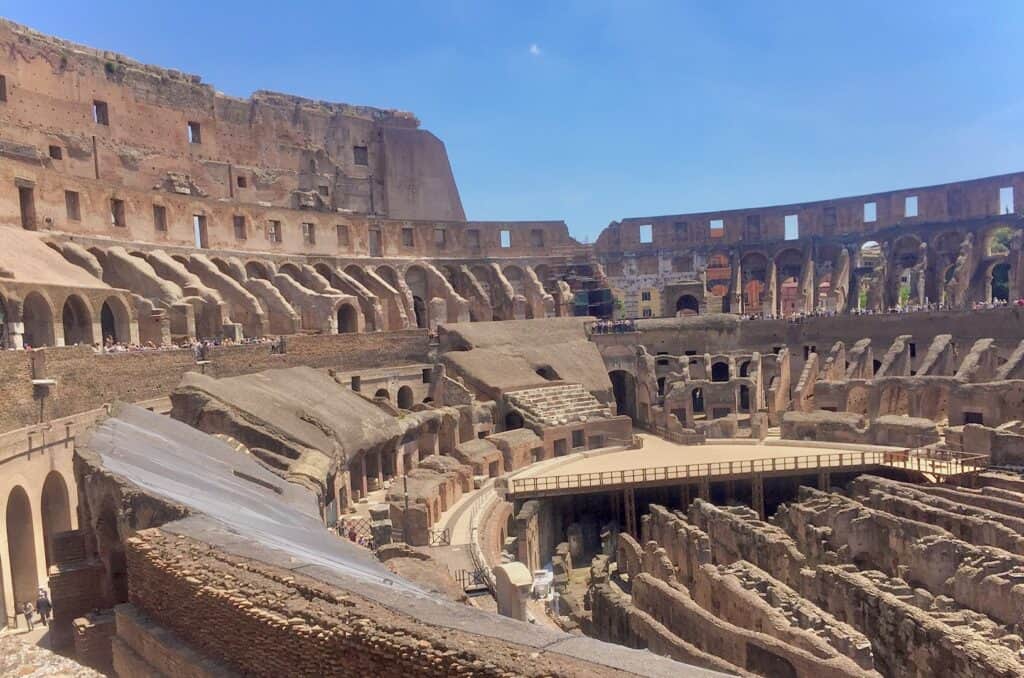
34. People offering to “help” you in the train station will expect a “tip.” Try to use the information booths or your phone if you are lost.
35. Be careful around people lurking near you at an ATM, especially in crowded train stations. This is generally good practice for most of us, but it’s easy to get flustered when you’re traveling internationally.
36. Be aware of cafe etiquette that is different than in the US. If you order at the counter, pay first before sitting down; table service usually incurs an extra charge or they may not serve you at all.
37. Eat all the gelato! If you’re planning to have gelato every day that you’re in Italy (which you should be), avoid the brightly colored gelato that is piled super high in the touristy areas. I say avoid loosely because quite frankly, it’ll still be good, but the other gelato you find that doesn’t look like that is going to be spectacular.

38. On the note of gelato – Pistachio is the best gelato and my goal was to eat it every day I was in the country. If you see really brightly colored green pistachio gelato, it’s not going to be as good as the more muted, creamier green colored pistachio gelato.
39. Avoid isolated areas at night. Stick to well-lit and populated areas in cities, especially after dark. But don’t be too worried about walking at night. Italians are generally night owls with their late dinners and there will usually be people outside.
40. If you’re trying to really show some excellent table manners in Italy, use utensils for most foods, including pizza. Eating with your hands is generally frowned upon.
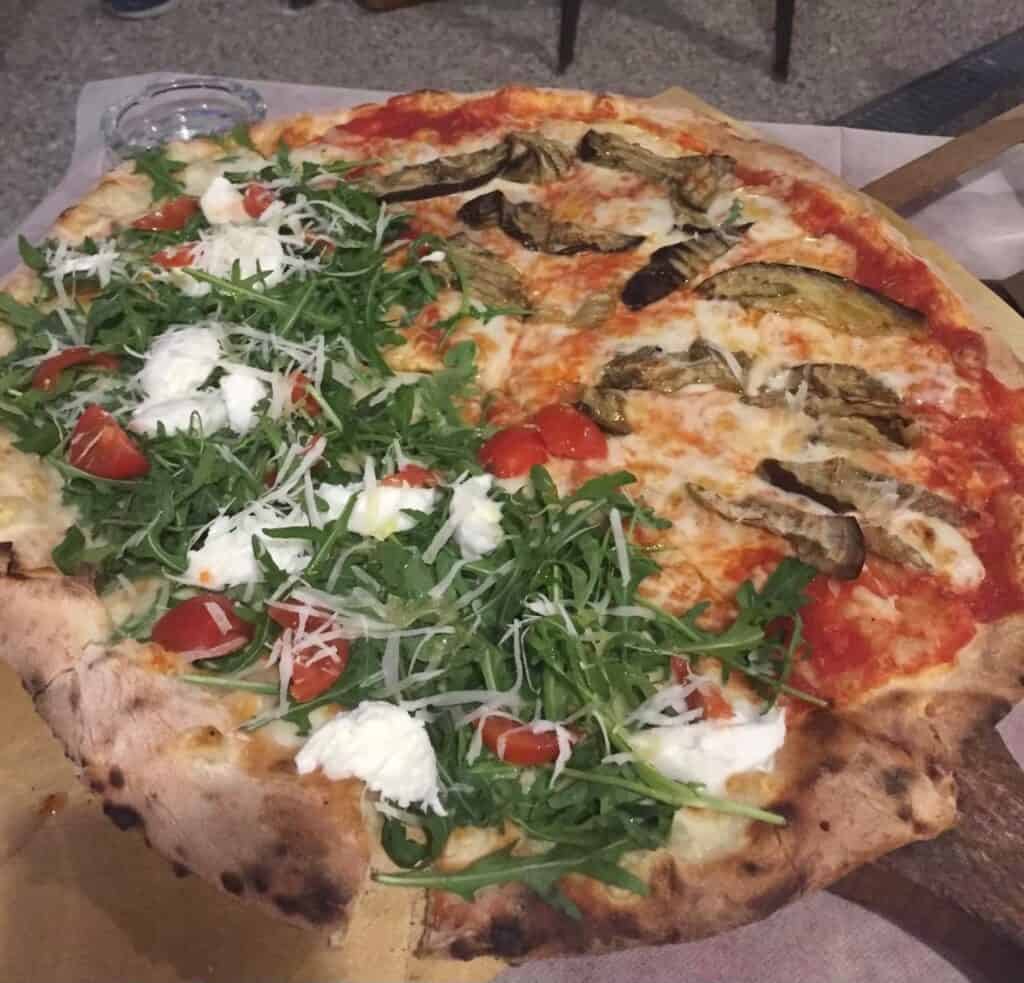
41. In a lot of restaurants, wine is cheaper than water. And as I said, when in Rome, you do you. But make sure you do stay hydrated if you’re traveling in the hot months as dehydration can be dangerous.
42. Lunch is typically served between 12:30 PM and 2:30 PM and dinner from 7:30 PM onwards. If you’re trying to find somewhere to eat at 5 PM, you’ll likely only find places that cater to tourists. Which can be fine if you’re hungry enough, but you may be getting overcharged and not receiving authentic cuisine.
43. Italian shops may have different opening hours from what you’d expect. Many shops close for a few hours in the afternoon for siesta, usually between 1 PM and 4 PM. If you have AC at your hotel, this can be a nice time for a midday nap if you’re trying to make it to 7pm for dinner.
44. Respect Italian quiet hours if they’re present. In many places, quiet hours (riposo) are observed in the afternoon, and noise is kept to a minimum.
45. Visit local markets for fresh produce and unique souvenirs. They’re a great way to experience local life. But be careful about what you try to bring home as some things cannot come through US customs. I’m talking the dried boar sausage we bought in the gorgeous Tuscan small town of Cortona. RIP your delicious cured meat.
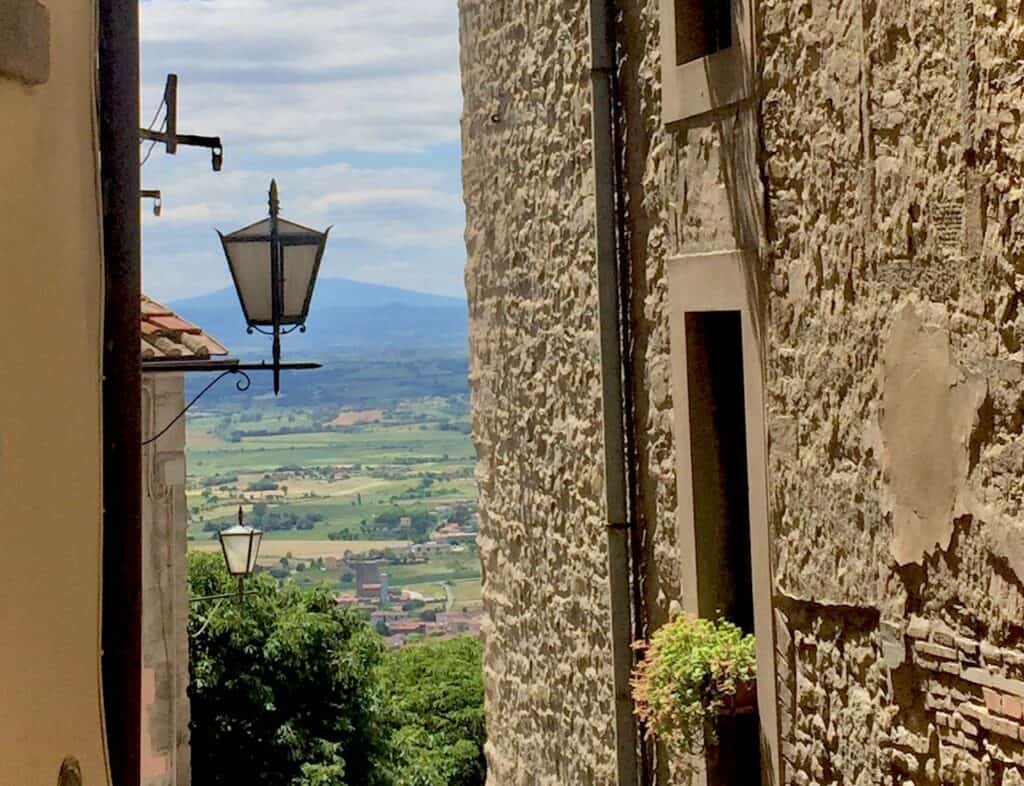
Italy’s rich tapestry of culture, cuisine, and scenery is sure to make your trip memorable. With these tips for traveling Italy in your pocket, you’ll be equipped to navigate its bustling cities, savor its culinary delights, and appreciate its unique local traditions.
Like I said, the more you know about Italy before visiting, the more you’ll be able to relax and fully enjoy your journey.
So pack your bags (not to the brim please), brush up on a few Italian phrases, and get ready for an adventure of a lifetime. By keeping these travel tips for Italy in mind, you’ll be prepared for any surprises that come your way and ready to embrace the enchanting beauty of this remarkable country. Buon viaggio!
Save to Pinterest for travel planning:
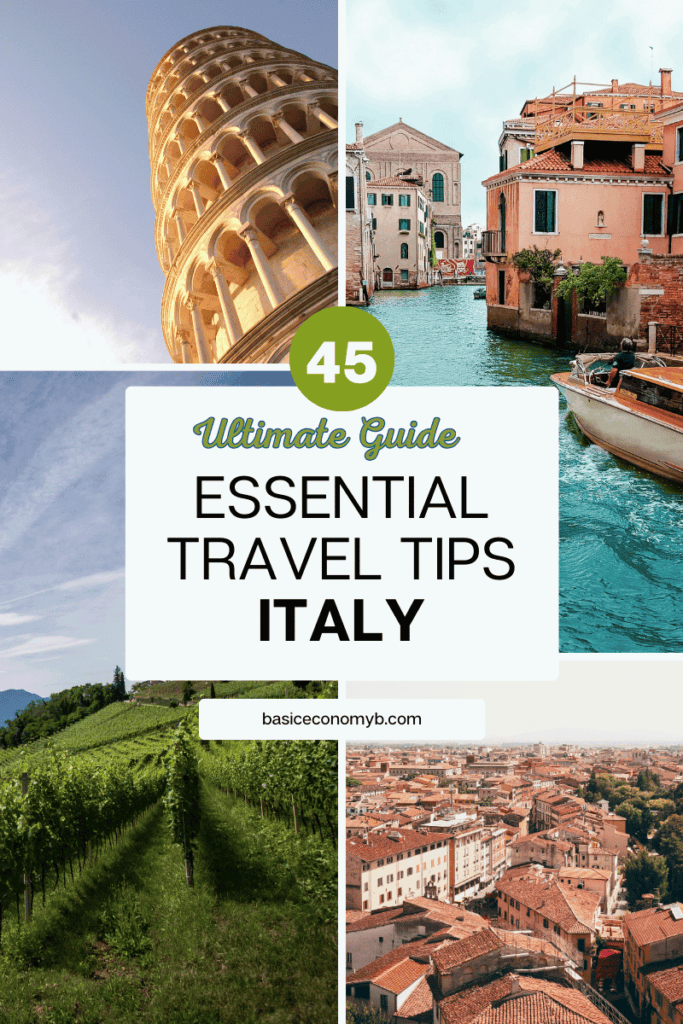
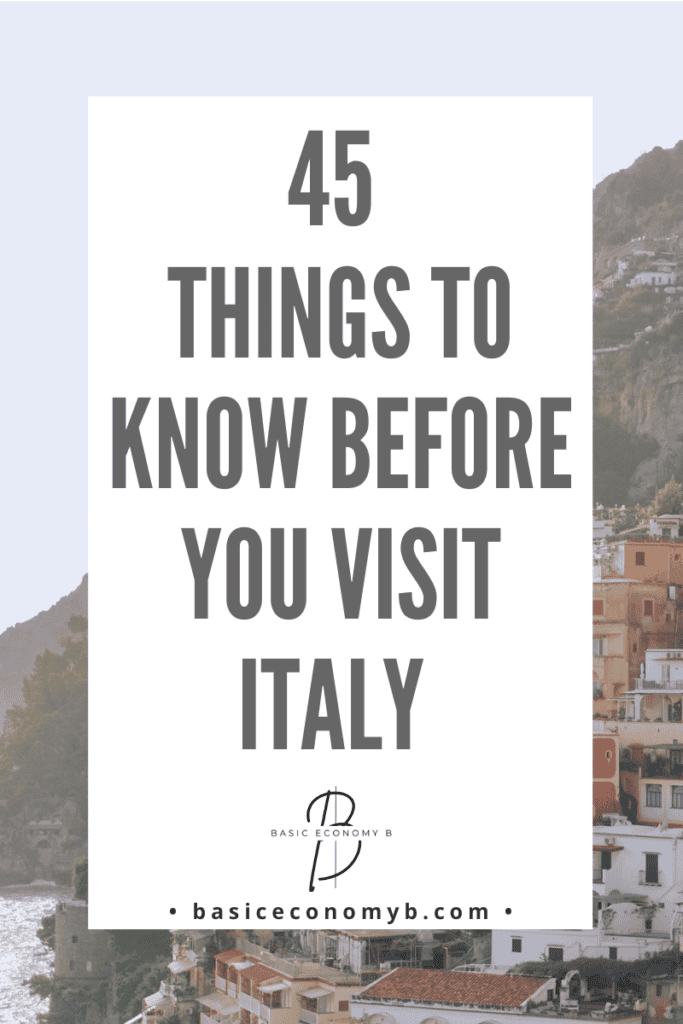
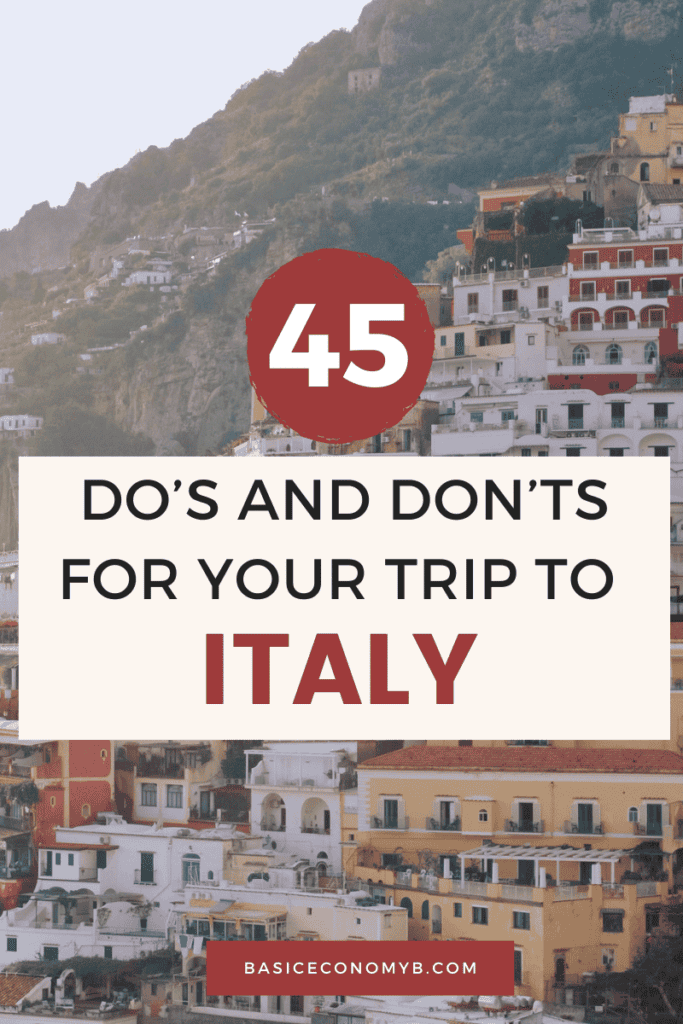

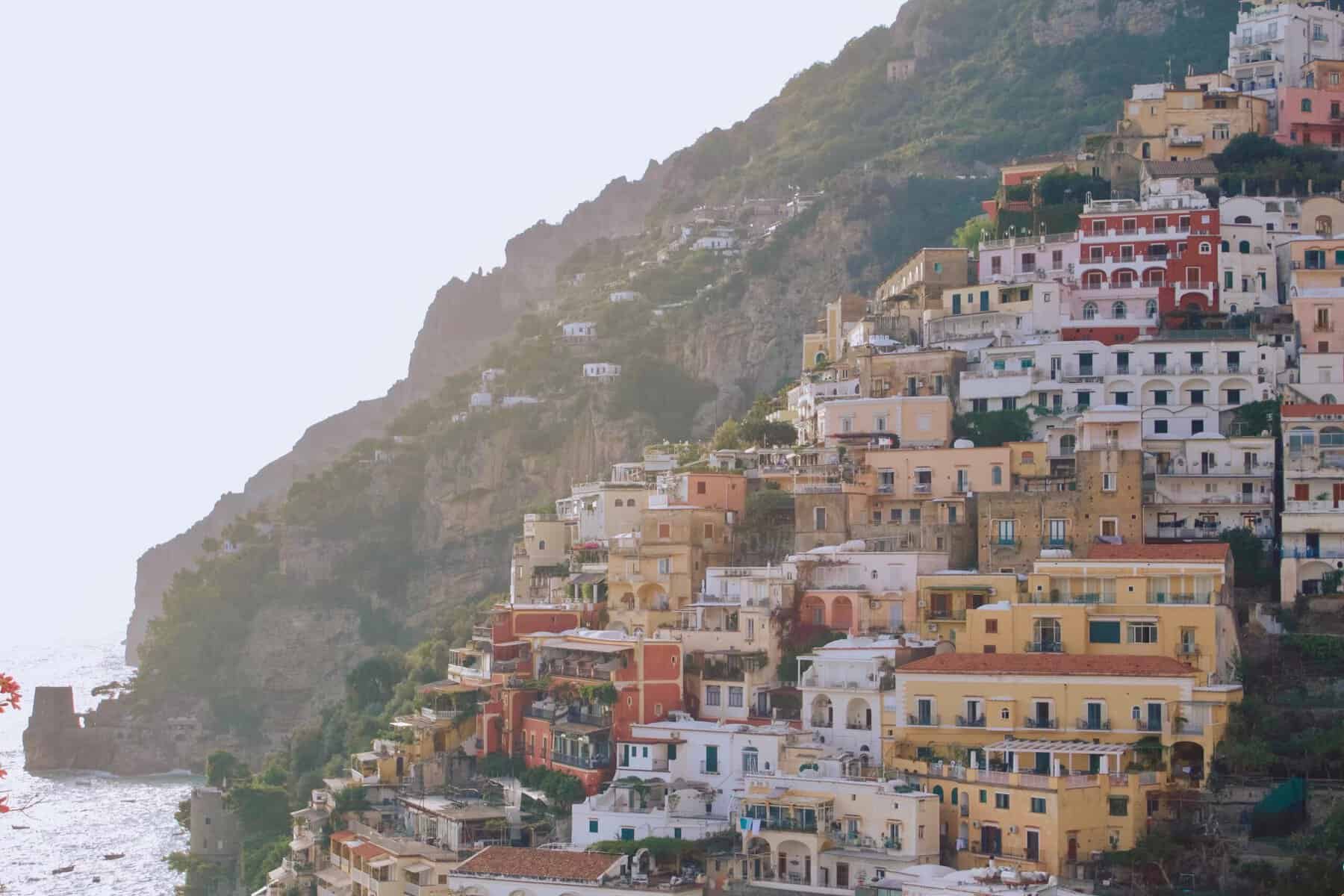
Leave a Reply